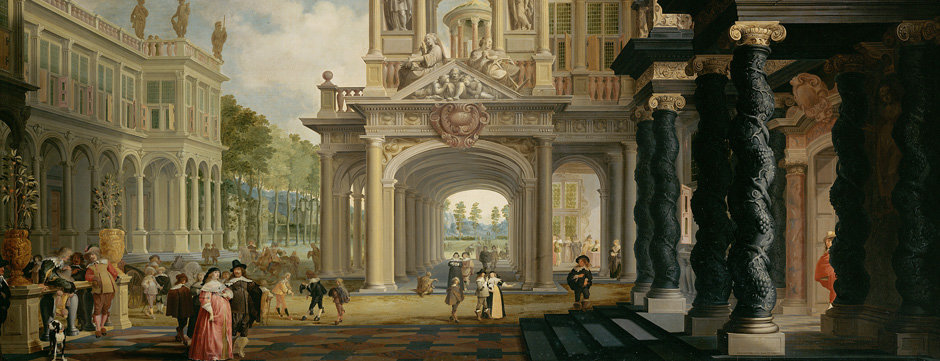Point of View #4
Unusual Insights into the Picture Gallery
In 2012 the Picture Gallery began a new series of small exhibitions entitled “Points of View”. Each showcases an unusual painting in the Picture Gallery that is rarely displayed for lack of hanging space, or that has been the focus of recent research.
Following the first three successful exhibitions, „Point of View # 4“ showcases an unusual Dutch baroque painting: Dirck van Delen’s Large Garden Palace. Painted in 1640, this monumental horizontal composition features a magnificent palace that, however, contains a number of moralizing messages that quickly become apparent to the attentive viewer.
In his Large Garden Palace, Dirck van Delen (Heusden, 1604/5 – 1671, Arnemulden) combines the depiction of an elegant company typical of Netherlandish garden pictures with a sumptuous architectural fantasy. People enjoying the pleasures of a garden or park were popular subjects in 16th century Netherlandish paintings and prints. Newly-prosperous burghers, merchants and aristocrats acquired houses on the edge of the city that became the setting for the refined amusements enjoyed by members of society. This large-scale architectural view is an example of the “court style” in Dutch art, whose representatives were greatly influenced by Antwerp traditions and specialized in the depiction of elaborate imaginary palaces (or churches). The strong influence of Antwerp baroque painting in the oeuvre of van Delen, who lived and worked at the juncture of the Southern and Northern Provinces, is particularly charming and unique among 17th century Dutch architectural painters.
Prominently displayed in the Green Room in Belvedere Palace from the late 18th century, The Large Garden Palace was moved to the Secondary Gallery in the 20th century and has not been on display since. Long forgotten, van Delen’s work has recently been reappraised and he is now recognized as one of the most admired and successful Dutch architectural painters in the 17th century. The comprehensive technological analysis of this architectural view carried out in preparation for Point of View #4 documents the artist’s profound understanding of perspective.
Information
14 February 2013
to 20 May 2013





